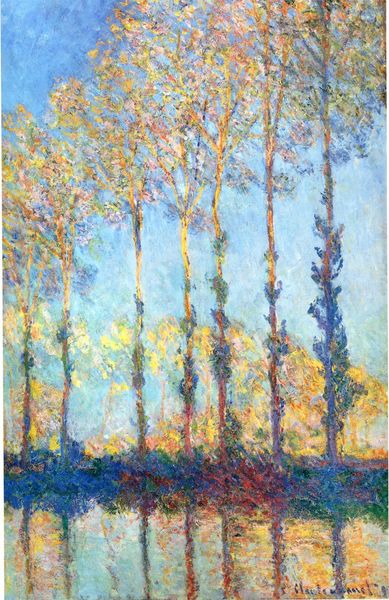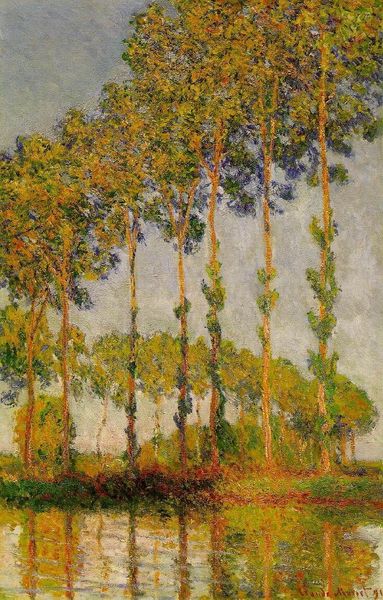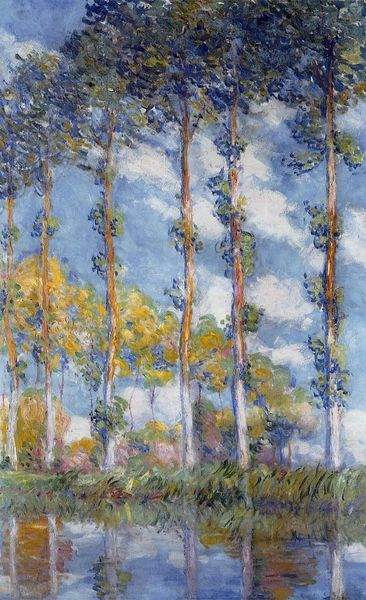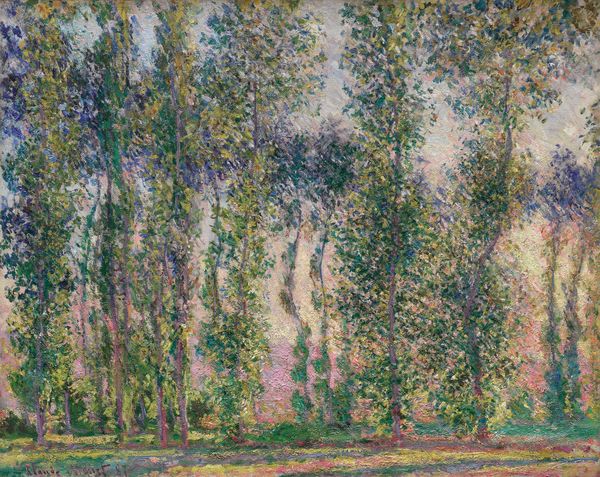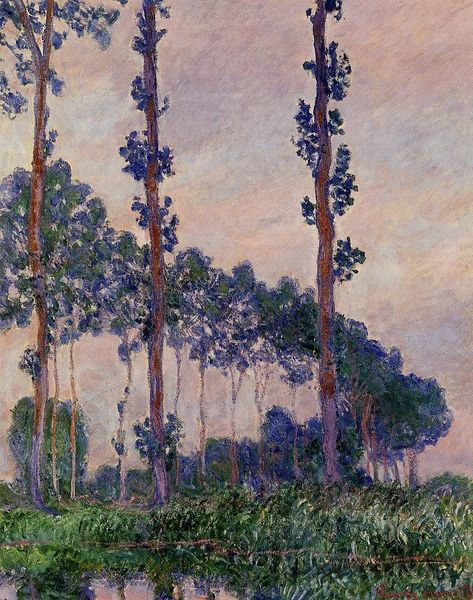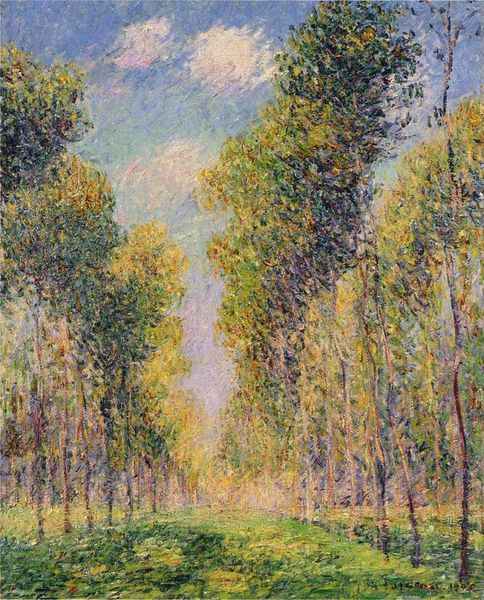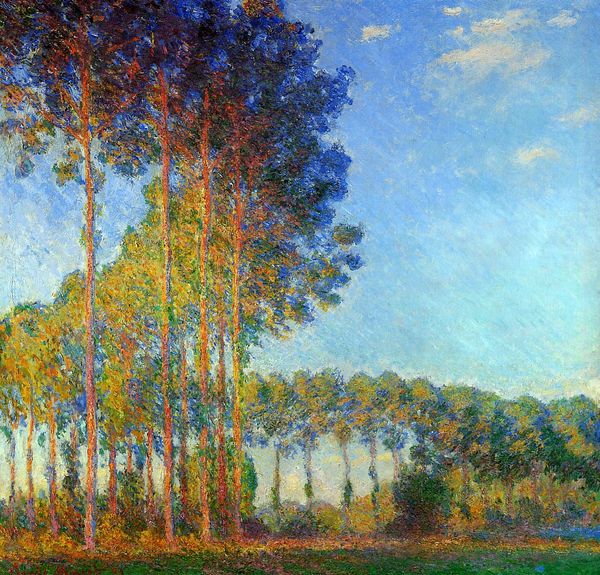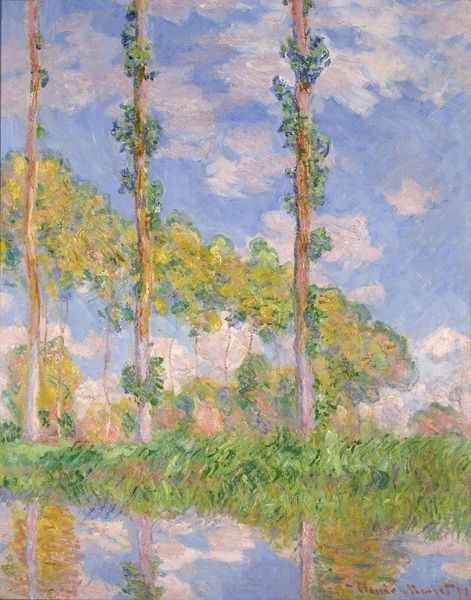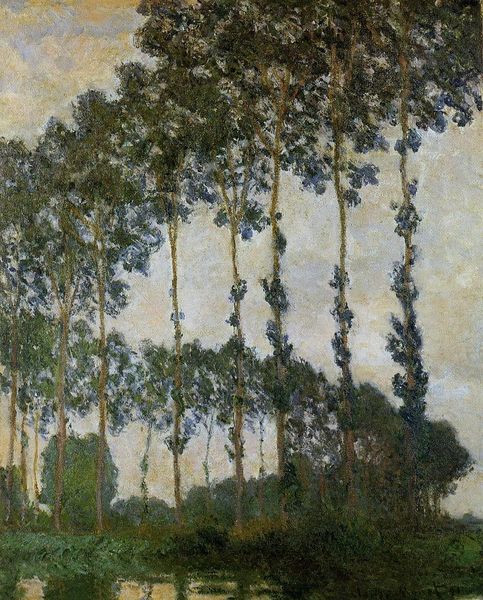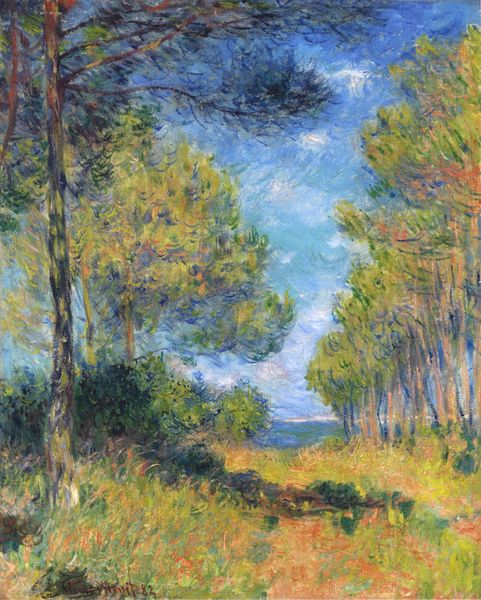
Copyright: Public Domain: Artvee
Curator: This painting just hums with a particular kind of golden quiet, doesn't it? I think it has the rhythm of a half-remembered song. Editor: It certainly does. What we're looking at is Claude Monet's "Peupliers au bord de l’Epte, automne," painted in 1891. Monet was captivated by the play of light and atmosphere, particularly how they transformed a scene across different times of day or seasons. Curator: Yes! It's as though Monet dipped his brush into the very air around him. I mean, look at those strokes! They’re like little whispers of color, conjuring not just trees, but the very essence of a breezy autumn afternoon. You can almost feel the cool dampness. Editor: Indeed. Monet was particularly interested in the ways in which industrialization and urbanization were encroaching on the natural world. These poplar trees lining the Epte River represent a kind of pastoral ideal threatened by the changing times. Think about how his focus on fleeting impressions contrasts with the rigid structures of industrial society. Curator: Which is, ironically, why so many ended up in factories! You know, churning out textiles with, yes, these impressions printed on them... it’s fascinating. Although, there is something subversive in his choice to celebrate them – poplars – these ubiquitous, ordinary trees. Not noble oaks, or anything. Editor: I agree. He elevates the mundane. Monet's later work has prompted much reflection on environmental ethics. The effects of light become allegories for the ephemerality of natural spaces, demanding reflection on the impact of ecological change in the landscape. Curator: So well said! In my studio, it’s like the light’s always chasing me. I'm in this frantic pursuit of capturing those moments like he did, when really, maybe I should just try to stop and listen, right? Appreciate… you know…the rustle in the leaves of everyday trees. Editor: It speaks to art's potential to prompt mindfulness and promote critical ecological awareness, and hopefully a social consciousness, which is as urgent now as it was then.
Comments
No comments
Be the first to comment and join the conversation on the ultimate creative platform.
